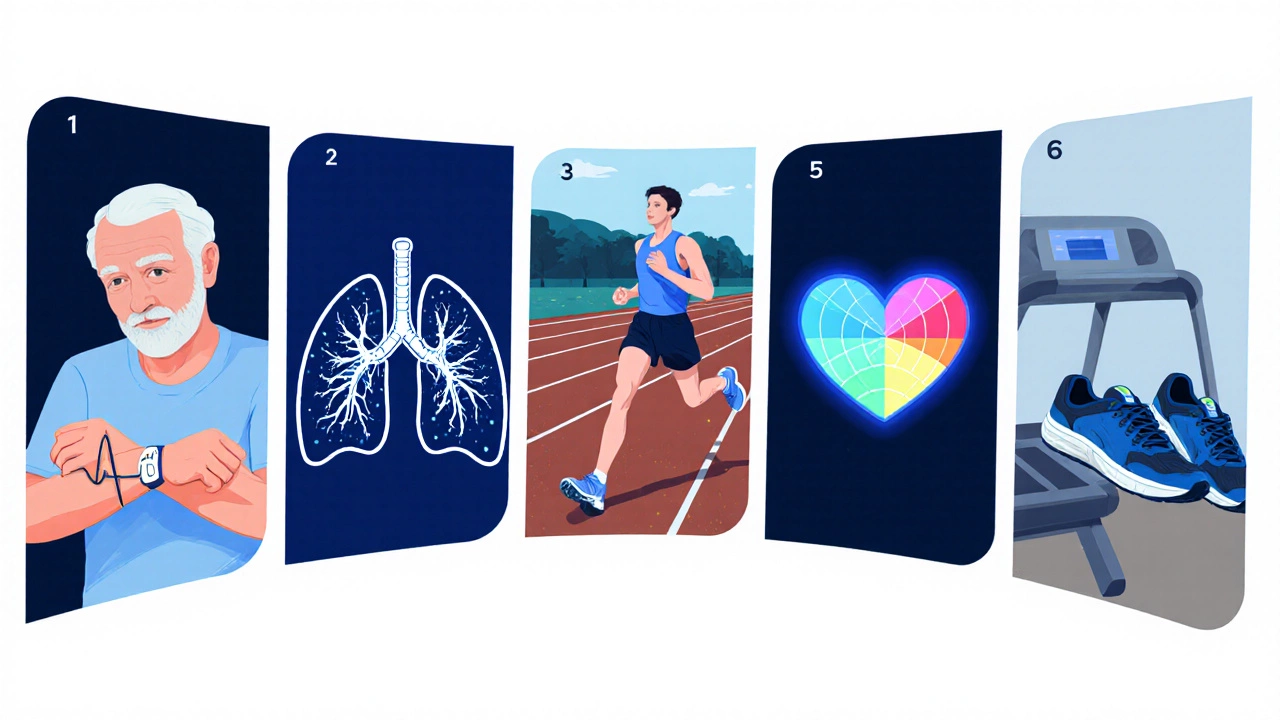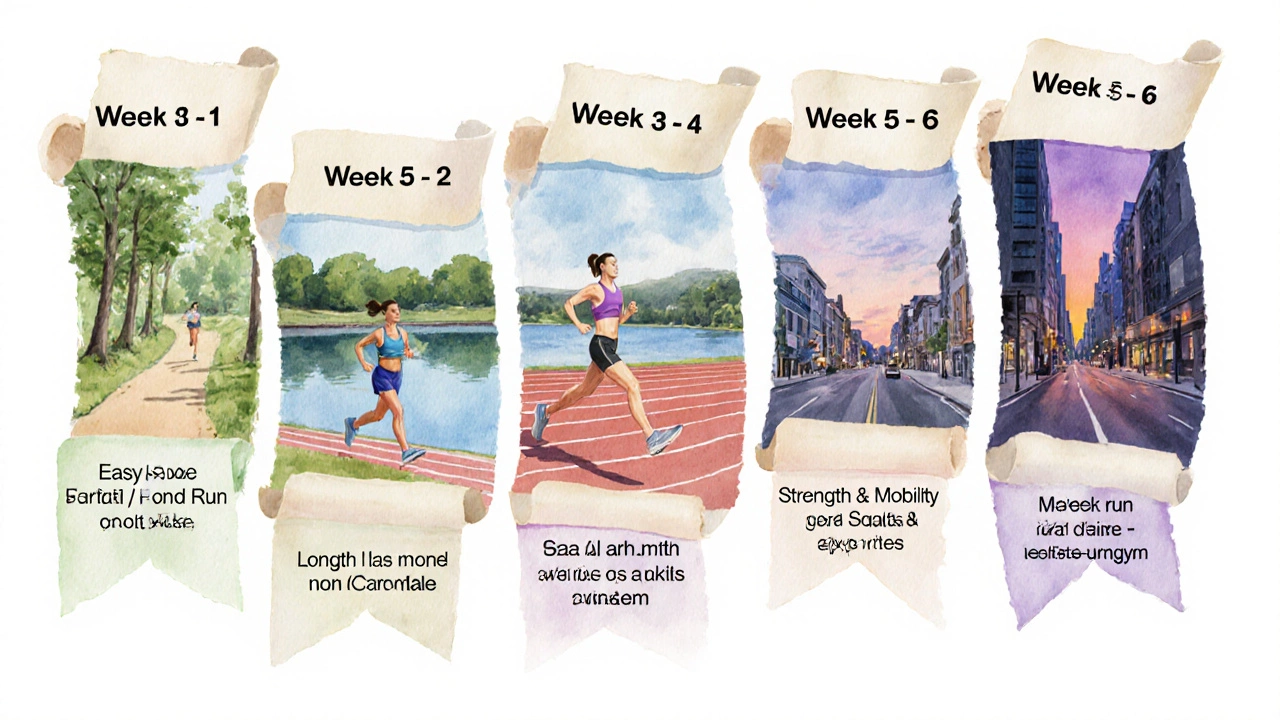Is an 11‑Minute Mile Good or Bad? How to Gauge Your Pace
 Oct, 14 2025
Oct, 14 2025
Pace Evaluation Tool
How Your Mile Time Compares
This tool evaluates if your current mile time is good or bad based on age, gender and fitness level. Enter your details to get personalized feedback.
When someone asks, "Is a 11 minute mile good or bad?", they’re really looking for a reality check on their current fitness. The answer isn’t a simple yes or no; it depends on age, training history, health goals, and where you want to go next. This guide breaks down what an 11‑minute mile means, how it stacks up against common benchmarks, and what concrete steps you can take to either maintain that pace safely or shave a few minutes off.
Key Takeaways
- An 11‑minute mile is a solid baseline for most healthy adults who run occasionally.
- Speed expectations shift dramatically with age, gender, and training volume.
- Heart‑rate zones, VO2 max, and perceived effort are better indicators than raw time alone.
- Structured plans-intervals, long runs, and strength work-can improve your mile by 1‑2 minutes in 8‑12 weeks.
- Use a simple checklist to decide if your current pace aligns with your personal goals.
What "11 Minute Mile" Actually Means
In running terminology, "pace" describes the time needed to travel a fixed distance, typically expressed as minutes per mile or kilometer. A 11 minute mile means you cover 1.609km in 11minutes, translating to a speed of about 5.5km/h (3.4mph). For a casual jogger, that pace feels like a brisk walk mixed with short bursts of easy running.
Because pace is directly linked to energy expenditure, an 11‑minute mile burns roughly 100-120 calories for a 70‑kg person, depending on terrain and wind resistance. The exact number isn’t as important as the fact that the body stays in a low‑to‑moderate intensity zone, which is ideal for building aerobic endurance without overtaxing joints.
How the 11‑Minute Mile Stacks Up
Below is a quick look at typical mile times across different fitness levels. The numbers are averages from large‑scale running surveys conducted in the U.S., Europe, and Australia in 2023‑2024.
| Fitness Level | Gender | Average Mile Time |
|---|---|---|
| Beginner (less than 2 runs/week) | Male | 12-14min |
| Beginner (less than 2 runs/week) | Female | 13-15min |
| Recreational (3‑4 runs/week) | Male | 9-11min |
| Recreational (3‑4 runs/week) | Female | 10-12min |
| Competitive (5+ runs/week) | Male | 6‑8min |
| Competitive (5+ runs/week) | Female | 7‑9min |
From the table you can see that an 11‑minute mile lands squarely in the recreational‑female or beginner‑male range. If you’re new to running, that’s perfectly respectable. If you’re training for a 5K race, you’ll likely aim to drop below 9minutes.

Factors That Influence Whether 11 Minutes Is "Good"
Speed isn’t just about legs; it’s a product of several physiological and external variables. Below are the top five factors you should weigh.
- Age - Metabolic efficiency declines about 1% per year after 30, so a 45‑year‑old’s 11‑minute mile may reflect solid fitness, while a 20‑year‑old could push faster.
- VO2 max - This is the maximum amount of oxygen your body can use during intense exercise. Typical recreational runners have a VO2 max of 35‑45ml/kg/min; improving it by 5‑10% often shaves 30‑60 seconds off a mile.
- Training intensity - Consistent low‑intensity runs build endurance, while interval sessions increase speed. Mixing both yields the greatest mileage gains.
- Heart‑rate zones - Running at 60‑70% of max HR keeps you aerobic; 80‑90% pushes toward anaerobic thresholds, essential for faster paces.
- Equipment - Proper running shoes and a reliable GPS watch help maintain consistent effort and avoid injury.
Evaluating these factors will give you a clearer picture of whether that 11‑minute mile is a stepping stone or a plateau.
How to Evaluate Your Own Pace Objectively
Instead of relying solely on a stopwatch, use these three simple checks:
- Talk Test: If you can hold a full conversation without gasping, you’re likely in a low‑intensity zone (around 11min/mi for many adults).
- Heart‑Rate Monitor: Keep your average heart rate between 130‑150bpm for a 70‑kg adult during an 11‑minute mile; this aligns with 60‑70% of estimated max HR (220‑age).
- Perceived Exertion: Rate the effort on a 1‑10 scale; a solid 5‑6 indicates a sustainable aerobic effort.
If all three line up, your mile is a good indicator of an aerobic base. If the talk test fails but your heart rate stays low, you may be under‑pacing and missing out on speed work.
Action Plan: Turning an 11‑Minute Mile Into a Faster One
Below is a 10‑week program that blends easy runs, intervals, and strength work. Adjust the mileage to match your current weekly total, but keep the structure intact.
- Weeks 1‑2 - Base Building: 3‑4 runs per week, 30‑45min each at a comfortable talk‑test pace (≈11‑12min/mi).
- Weeks 3‑4 - Introduce Intervals: One day per week, 8×400m repeats at 9‑minute mile pace with 90sec jog recovery.
- Weeks 5‑6 - Long Run Extension: Increase the longest run to 60‑75min, staying in Zone2 (heart‑rate 130‑150bpm).
- Weeks 7‑8 - Strength & Mobility: Add two 20‑min sessions of body‑weight squats, lunges, and core work to improve running economy.
- Weeks 9‑10 - Race‑Specific Pace: One weekly tempo run of 20min at a target 10‑minute mile pace, followed by a cool‑down.
Most runners report a 1‑2minute improvement after completing a cycle like this, especially when they keep a log of heart‑rate data and perceived effort.

Common Misconceptions About the 11‑Minute Mile
Myth #1: "If I can’t hit 8min/mi, I’m out of shape." Reality: Many healthy adults, especially those over 40, run comfortably at 11‑12min/mi and still have excellent cardiovascular health.
Myth #2: "Running faster automatically burns more fat." Reality: Fat oxidation peaks around 60‑70% of max HR, which aligns with an 11‑minute mile for many people. Sprinting burns more calories overall but less fat proportionally.
Myth #3: "I need expensive shoes to improve my pace." Reality: Properly fitted shoes that match your foot strike and provide adequate cushioning matter far more than brand or price.
Quick Checklist - Is Your 11‑Minute Mile Working for You?
- Do you feel comfortable holding a conversation while running?
- Is your average heart rate in the 130‑150bpm range for this effort?
- Are you meeting personal goals (weight management, stress relief, race preparation)?
- Do you experience any persistent pain or joint issues?
- Are you following a balanced training plan that includes rest days?
If you answered "yes" to most, your current pace is serving you well. If you answered "no" to several, consider the improvement plan above.
Frequently Asked Questions
What age is considered "average" for an 11‑minute mile?
For adults aged 30‑50 who run less than three times a week, an 11‑minute mile is typical. Younger athletes usually run faster, while seniors may maintain a similar pace with consistent training.
Can I safely drop my mile time without a coach?
Yes, as long as you follow a progressive plan, honor rest days, and listen to your body. Using a heart‑rate monitor and recording perceived effort can replace much of the guidance a coach provides.
How many calories do I burn running an 11‑minute mile?
A 70‑kg (154‑lb) runner typically burns about 100‑120 calories per mile at that pace, assuming flat terrain and no wind resistance.
Should I use a treadmill or outdoor route to improve my mile?
Both have merits. Treadmills give precise pacing and reduce impact, ideal for interval work. Outdoor runs improve balance and adapt your body to real‑world variables like wind and elevation.
Is a slower pace ever better for weight loss?
For fat loss, longer sessions at a moderate intensity (like an 11‑minute mile) are effective because they tap into fat stores without causing excessive fatigue that leads to burnout.
